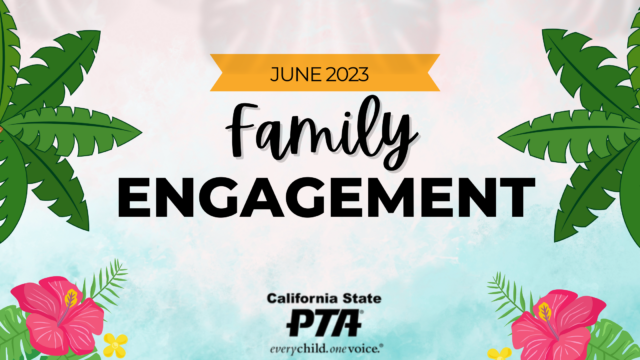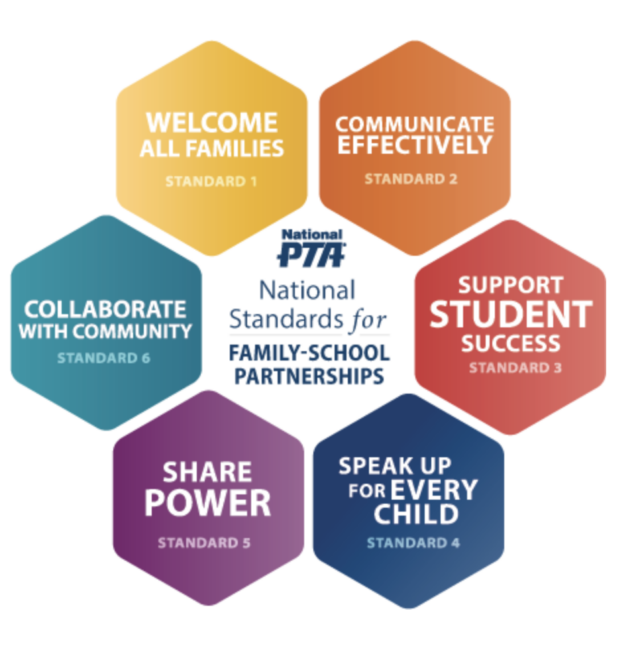 by Colleen Hervey, Family Engagement Commissioner
by Colleen Hervey, Family Engagement Commissioner
“Every Child, One Voice.” That is the foundation for the work of PTA. Parents want what’s best for their children but may not always have the knowledge, means, or opportunity to provide that. This is why National PTA developed its National Standards for Family-School Partnerships, which were recently updated.

A previous blog post provided a full rundown of the Standards and links to comprehensive information from National PTA. Standard #4 provides guidance for how parents, educators, and community members all play a role in making sure every child receives the nurturing and support they need.
Standard 4: Speak up for every child. The school affirms family and student expertise and advocacy so that all students are treated fairly and have access to relationships and opportunities that will support their success.
This standard for family-school partnerships recognizes the importance of helping families navigate the school system in order to communicate effectively with educators without fear of bias and thu
s provide every child with the very best educational experience possible.
The standards include two goals that will help school and PTA leaders focus on what’s most important to ensure all students and families feel confident in communicating and receiving help to address their child’s needs.
The first goal is to Navigate the school system: Are families knowledgeable and able to raise questions or concerns about their child’s educational experience? The ability of families to communicate concerns about their child’s education within their school system is vital to the success of every student.
The second goal is to Address inequitable outcomes and access: Does the school remove barriers for families to be advocates for and with students—particularly those who are most marginalized? Reviewing data and other indicators to dig deep into determining what groups are being underserved or underrepresented will help remove barriers and bias, providing better support for all students.
The updated standards also provide indicators developed to help guide school and PTA leaders in achieving each targeted goal.
To access all of the information and resources available, including a webinar that dives deeper into ways to speak up for every child, click on this link: Standard 4: Speak Up for Every Child
Steps Towards Meeting These Goals
A great tool included in the updated National Standards for Family-School Partnerships is a School Leader’s Rubric to help measure progress in improving communication between families and school partners, removing barriers that prevent a fair and equitable educational experience for all children. This includes:
- Facilitating connections between families and school/district personnel so that families have access to relationships and networks within the school and district.
- Asking members of the various groups and subgroups what barriers need to be removed and what supports they need to be successful in leadership roles.
- Ensuring that members from underrepresented groups take the lead in informing, designing, and implementing school improvement efforts so they develop trust and confidence in staff and PTA leaders.
As your PTA works to help uplift family voices to speak up for every child, the following self-reflection questions may guide your efforts and provide a stepping-off point from which to plan programs:
- How does our PTA engage students in assessing the needs and setting priorities for our PTA and school community?
- Does our PTA know how our school’s students are doing academically, socially, and emotionally across different demographic groups? Do we dedicate resources to support these needs? Do we advocate for the school district to meet these needs?
- How does our PTA share information and prepare families so that they can advocate for their child and all children?
- How does our PTA help connect families to school and district decision-makers so that their voices can be heard?
- How is PTA discussing bias in family engagement practices in our PTA and school community? What efforts are we taking to confront and eliminate bias?
The updated National Standards for Family-School Partnerships reflect a broadened vision of student success that recognizes the important ways that families and schools collaborate around student achievement and well-being with a more intentional emphasis on equity and inclusion, including guidance to help schools and PTAs partner with our increasingly diverse families. For more information, visit the California State PTA website.